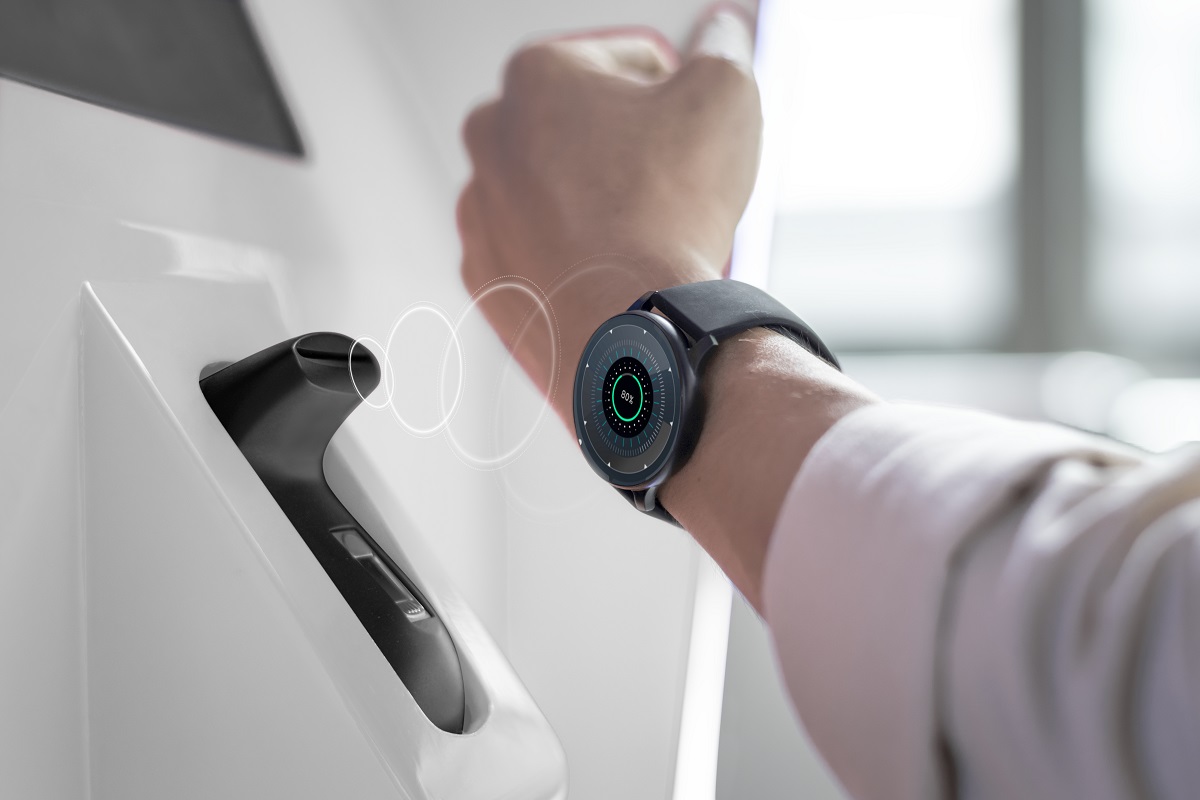
In the era of growing wireless communication popularity, NFC and RFID technologies are increasingly used, gradually replacing traditional barcodes. Although they may seem similar, these are actually two distinct solutions. So, what differentiates RFID from NFC, and when is it worth choosing one over the other?
RFID stands for Radio Frequency Identification. Technologia ta wykorzystuje pole elektromagnetyczne do identyfikacji i odnajdywania obiektów lub zasobów.
Depending on the frequency, RFID exists as:
In every case, communication is enabled by programmed RFID tags placed in the desired location. This technology is used in industries such as manufacturing, retail, and logistics, where large-scale operations need to be carried out quickly.
On the other hand, NFC (Near Field Communication) is… On the other hand, NFC (Near Field Communication) is…) is an autonomous wireless communication standard based on RFID technology. It operates over a short distance and at a frequency of 13.56 MHz. It can therefore be said that it is part of the RFID High Frequency. However, it is regulated by separate communication protocols – ISO/IEC 14443 and ISO/IEC 18000-3.
NFC is primarily used in devices for individual users, such as smartphones, smartwatches, or access cards. In a sense, it is a combination of RFID and Bluetooth, as devices pair with each other over short distances and do not require any configuration.
NFC identifiers look similar to RFID ones. They can take the form of key fobs, stickers, or plastic cards.
Historically, RFID technology was the first to be developed, back in the 1980s. NFC, on the other hand, was created only in 2002.
Despite the similarities between the two technologies, there are significant differences between them.
First and foremost, their applications are entirely different. Due to its short range, NFC is commonly used in contactless payments, public transportation, and access control. On the other hand, the technology allows for reading one record at a time.
In contrast, RFID works over distances of up to several hundred meters and can scan multiple objects simultaneously. For this reason, it is used in warehouses, logistics, and manufacturing.
In the case of RFID, communication is one-way, whereas with NFC, it is two-way.
Another difference is the amount of storage space for data. In this regard, NFC takes the lead, allowing up to 4 KB of information to be stored in various formats—ranging from text and media to URLs.
NFC technology is more modern. While RFID requires a specialized reader, NFC can be read using a mobile phone, enabling the retrieval of metadata, launching applications, or facilitating information exchange between two devices.
Since NFC is an extension of RFID, it is theoretically possible to use an NFC module to read an RFID tag. Over the years, several RFID tag standards compatible with NFC have been developed. These include Mifare Classic, Ultralight, and DESfire, as well as iCODE2 and several NTAG variants.
Most smartphones are equipped with an NFC module. This means they can also be used to read passive RFID tags operating in the High Frequency standard. Such a solution is often used as part of access control to office rooms in companies.
To distinguish between an RFID and an NFC card, it’s best to consult the device’s technical documentation. If that’s unavailable, you can perform a simple test by attempting to read the tag. NFC works only over a short distance and within a very narrow frequency band. If the connection doesn’t work, it means the card is made using RFID technology.
Below, we present the key features of RFID and NFC technologies in a clear table.
| Cecha | RFID | NFC |
| Operating frequencies | LF, HF, UHF, Microwave | HF (13,56 MHz) |
| Operating range | Depending on the frequency, up to 100 meters | Up to approximately 10 centimeters |
| Security level | Moderate | Tall |
| Difficulty of implementation | High | Low |
| Communication | Simplex | Duplex |
| Data transfer speed | Varies, depending on the type of RFID | From 106 to 424 Kb/second |
| Difficulty level to use | Short | Very low |
The question about which technology to choose is difficult to answer unambiguously, because both RFID and NFC can help in the functioning of the company.
The first solution is a great alternative to barcodes, e.g. for logistics or goods inventory purposes. In turn, NFC can be used to control access to key rooms, such as server rooms or company archives.